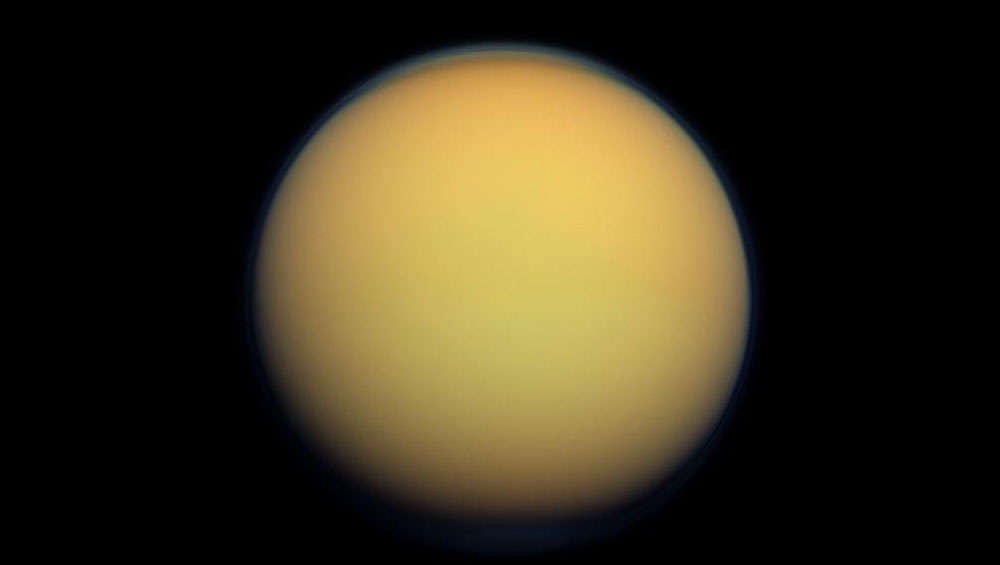Create a free profile to get unlimited access to exclusive videos, sweepstakes, and more!
Lost in space, like tears in the rain…how does it rain lava, methane & even molten metal on some alien worlds?

During his last gasps in Blade Runner, Roy Batty’s face was streaked with both his own tears and raindrops that the sky was crying onto a next-gen LA, but rain on faraway worlds can get weirder than even humanoid replicants.
Beyond Earth are atmospheres so unlike our own that it rains everything from methane to molten iron and even lava. In 2026, NASA’s Dragonfly quadcopter will take off to investigate the methane rain on Saturn’s moon Titan. Extraterrestrial rain can get even more exotic than that on exoplanets too far to send a spacecraft to. Scientists have now gotten the closest they could to these alien atmospheres with a new study that compares the water cycle on Earth with other planets and moons, depending on their chemical makeup.
“You can roughly think of planetary climate as the surface temperature when the incoming energy from a star is balanced by the outgoing energy lost by the planet as heat,” planetary physicist Kaitlyn Loftus, who led a study recently submitted to Journal of Geophysical Research: Planets, told SYFY WIRE. “Clouds can both decrease the incoming energy (to cool a planet) and decrease the outgoing energy (to warm a planet) depending on their properties.”
There have to be clouds before there is rain, and because they ultimately control climate, you need to understand them and how they function before you can make any predictions about the weather report on a distant exoplanet. Though there is only a small difference between incoming and outgoing energy on Earth, this can go to extremes in some more bizarre atmospheres. Exoplanet WASP-76 b only faces its star on one side. That side is scorching enough to vaporize iron that scientists believe is later blown over to the dark side, condensing into clouds that literally rain metal.
Even Earth’s clouds and precipitation often defy understanding, but the way that individual raindrops behave is much more understandable. It can also be applied to places beyond this planet. Raindrops can only reach the surface of a planet or moon if they fall within a pretty narrow size range.
Figuring out the behavior of these atmospheric tears means knowing how they are shaped, how fast they fall, and how fast they evaporate. That obviously can’t be even close when you compare rain on Earth with the molten iron that falls on WASP-76 b only to evaporate and start the entire vicious cycle over again.
“We get the narrow size range from an upper bound and a lower bound that are seemingly unrelated,” said Loftus. “The upper bound comes from where surface tension is no longer able to hold a raindrop together, so it becomes unstable and breaks up. The lower bound comes from where raindrops evaporate faster than they fall to the surface, so they cannot transport liquid to the surface.”
This might be the case for the blazing surface of a planet hot enough to vaporize iron (at least whatever is considered the surface of a gaseous hot Jupiter like WASP-76 b). Drops of liquid iron might turn to vapor in midair, depending if winds are blowing them towards the hotter side.
Freezing cold Titan has other ways of spawning raindrops. Cryovolcanoes belch methane into the atmosphere. That methane then rains down on the surface to form lakes. Though Titan’s surface is nearly cold enough to freeze methane, and the lower atmosphere experiences a temperature drop from its haze, methane already on the surface raises the temp and stays liquid by releasing heat absorbed from the Sun.
Titan has only ever had rain observed twice by Cassini, and the drier parts of the moon may go as long as a thousand years without rainfall. Observations from Dragonfly will reveal more about this. Planetary climates may be stabilized by rain, and habitability that depends on the existence of liquid water on the surface could be determined by the carbonate-silicate cycle, which is thought to have kept Earth habitable over billions of years through the increased weathering of rock that rain causes as temperatures increase. Loftus can compare this process on Earth to what happens on Titan.
“On Titan, water acts as ‘rock’ at the surface and rain is made of methane and nitrogen," said Loftus. "Per unit surface, it has a much larger mass of air and volume of condensable gas (rain-able material) than Earth. However, Titan can be considered drier in methane than Earth is in water.”
If liquid methane on the surface of Titan can determine its habitability, then life on a moon that would be poisonous to humans could have found a way, since methane-eating bacteria do exist. Alien rain could lead us to life as we know — or don’t know — it.



























